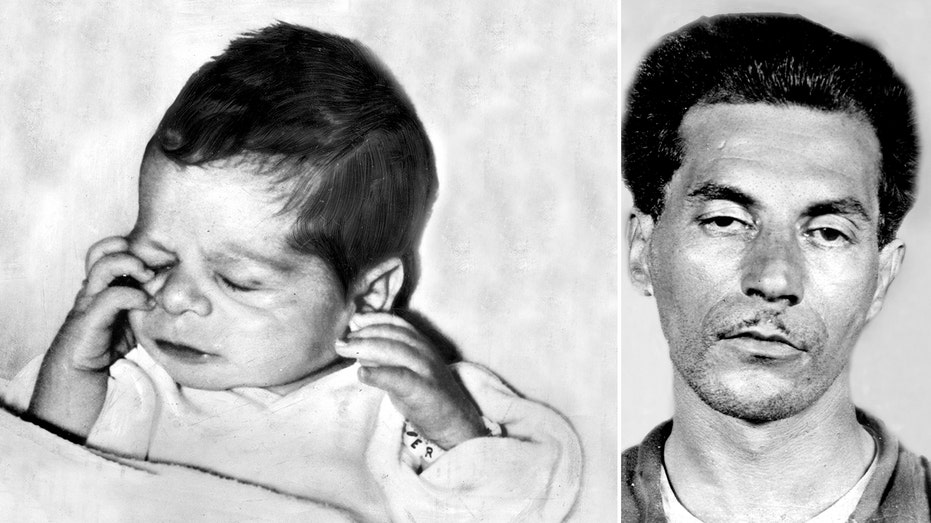The kidnapping of 1-month-old Peter Weinberger on July 4, 1956, in Long Island, New York, resulted in new legislation passed by former President Dwight D. Eisenhower during his presidency which allowed federal investigators to become involved in a kidnapping case after 24 hours missing versus the original 7-day waiting period.
In the late afternoon on Independence Day in 1956, Beatrice “Betty” Weinberger wrapped her baby in a blanket and placed him in a carriage on the family’s front porch before going into the home for a few minutes as the child slept.
When she returned to the porch, the carriage was empty and a ransom note was left by a kidnapper.
AMBER ALERTS: WHAT THEY ARE AND WHAT TO DO IF ONE POPS UP ON YOUR PHONE
The note written in pencil read, “I hate to do this to you, but I am in great trouble,” according to the New York Daily News. It added that the kidnapper was “not asking for a lot of money” but only what he needed and that he was “very serious about this.”
He also threatened to kill the baby at the “first wrong move” and also read that he was sorry for his actions but was desperate for money. The criminal demanded $2,000 in small bills for the return of the baby, according to the FBI’s website. If the ransom was paid, he promised to return the baby “safe and happy” the next day.
He signed the letter “Your baby sitter.”
Weinberger called the Nassau County Police Department, about 35 miles outside of New York City, and her husband, Morris Weinberger, a drug salesman, requested newspapers opt out of reporting on the abduction at the time. However, the New York Daily News included Peter’s story as a front page headline, and reporters immediately surrounded the Weinberger residence.
THE DISAPPEARANCE OF CHARLEY ROSS, THE FIRST KNOWN VICTIM OF KIDNAPPING FOR RANSOM IN US
Police left a decoy ransom package at the spot, but the kidnapper never showed up to collect it. It was later confirmed, after an arrest was made, that the kidnapper did show up with the infant but was quickly diverted by the commotion outside the home.
The FBI set up a temporary investigation headquarters for the case in Mineola, Long Island, beginning on July 11, 1956, just one day after a second attempt at the ransom money was made by the kidnapper. On July 10, he called the Weinberger home twice demanding $5,000 and provided new instructions as to where to leave the money, but he did not show up to either location.
Police located a bag with a note written in the same handwriting as the first ransom note. It provided a location where the baby could be found “if everything goes smooth [sic].” FBI agents and handwriting experts from the FBI analyzed almost 2 million writing samples, which included many provided by the BMV and probation offices and schools, as well as other federal and state municipalities, according to the FBI website.
On Aug. 23, 1956, Angelo John LaMarca, a truck and taxi driver and Plainview, New York, resident, was arrested for the kidnapping of Peter when police matched his handwriting to the ransom notes.
FOLLOW THE FOX TRUE CRIME TEAM ON X
Though LaMarca initially denied any connection to the kidnapping, it was later discovered that he was living in a $15,000 home with his wife and two children that he could not afford and admitted to the abduction.
LaMarca also told police he had killed the baby for the sake of his own children as he was in financial debt with loan sharks from Brooklyn. He said that he had been driving around neighborhoods looking for a way to make quick cash and saw Weinberger leave Peter on the porch.
He told police that the day he went to drop off the infant and receive the ransom money, he was scared off by the crowd of reporters and officers and dumped the baby off of a highway, according to the FBI’s website.
The FBI fled to the scene described by LaMarca and found the decomposing remains of Peter. During the trial, where lawyers attempted to plead temporary insanity, it was determined Peter died of asphyxia, starvation and exposure at around 6 weeks old.
LaMarca was tried on kidnapping and murder charges and on Dec. 14, 1956, and found guilty by a jury. He was sentenced to death. Though he appealed a number of times, LaMarca was executed on Aug. 7, 1958, at Sing Sing Prison in Ossining, New York.
Source
